What are the different Aquascaping Styles?
Introduction to Aquascaping
Exploring the world of aquascaping styles unveils a captivating hobby where artistry meets nature. The aquascaping meaning goes beyond merely decorating an aquarium; it's about creating an underwater landscape, a serene slice of nature that thrives within glass walls. Enthusiasts worldwide have developed various aquascape styles, each with unique principles and aesthetics, turning aquarium design into a form of living art. In this article, we are going to discuss the most popular aquascaping styles and we deeply hope you'll find a dose of inspiration here!
The Nature Aquarium Style
The Nature Aquarium is one of the most revered types of aquascapes, brought to the limelight by Takashi Amano. This style is characterized by its mimicry of natural landscapes, focusing on simplicity and tranquility. Here, the arrangement of aquatic plants, rocks, and woodwork harmonizes to depict a serene, untouched environment, inviting onlookers to a peaceful, aquatic world.
The Dutch Aquascape Style
A stark contrast to the Japanese minimalism of Nature Aquariums, the Dutch Aquascape is another prominent category within the aquascape styles.
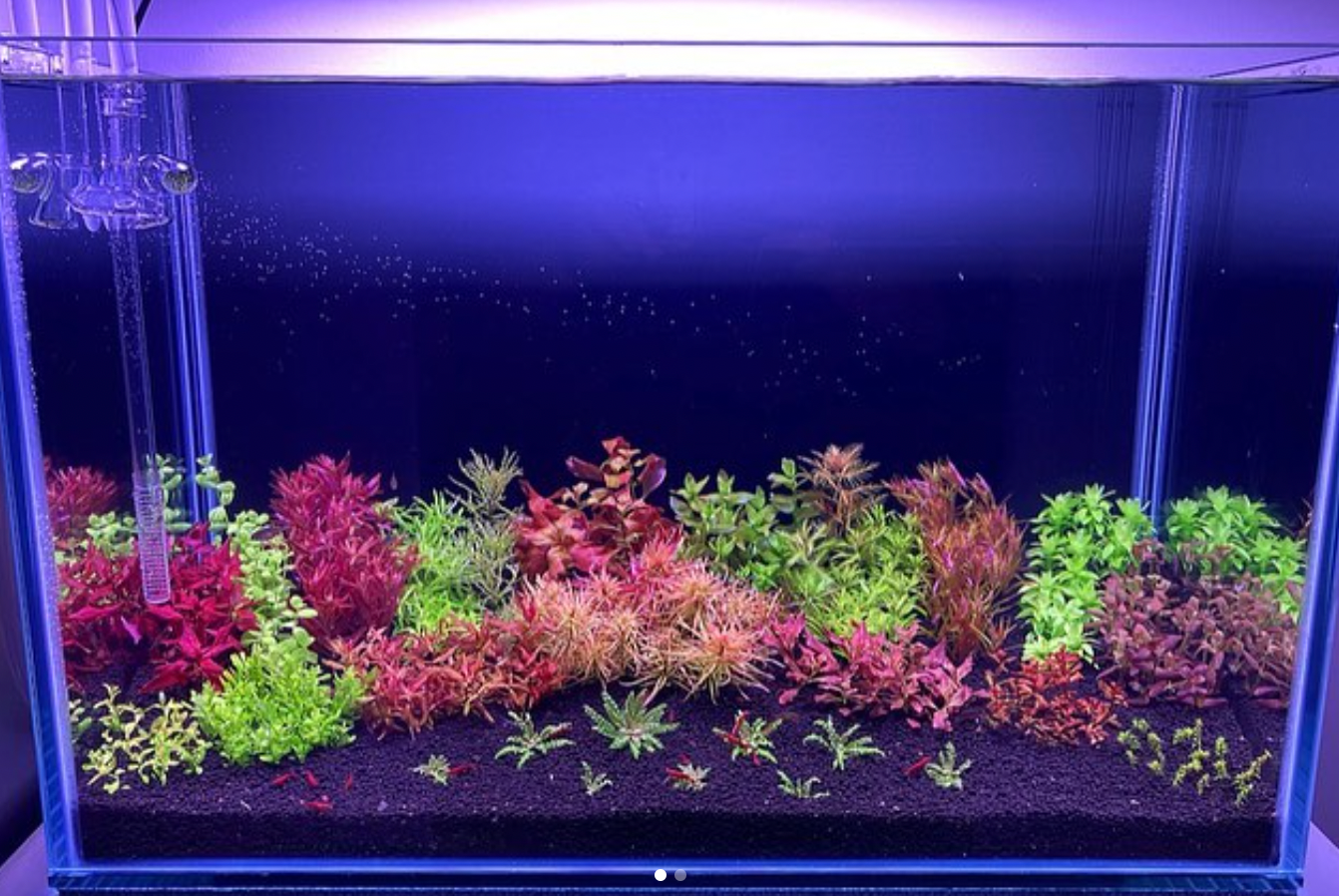
Originating from the Netherlands, this style is a horticultural tapestry that showcases plant diversity without the prominent use of hardscape. The Dutch technique emphasizes the importance of color, texture, and strategic planting to create a lush, garden-like appearance in the types of aquascape designs.
The Iwagumi Style
The Iwagumi layout is one of the most disciplined and challenging types of aquascape to master. It is based on simplicity and open space, with a focus on stone arrangements that follow specific rules for placement and selection. The aim is to evoke a sense of age and natural beauty through minimalism, creating a balanced and harmonious environment that is both stark and vibrant.
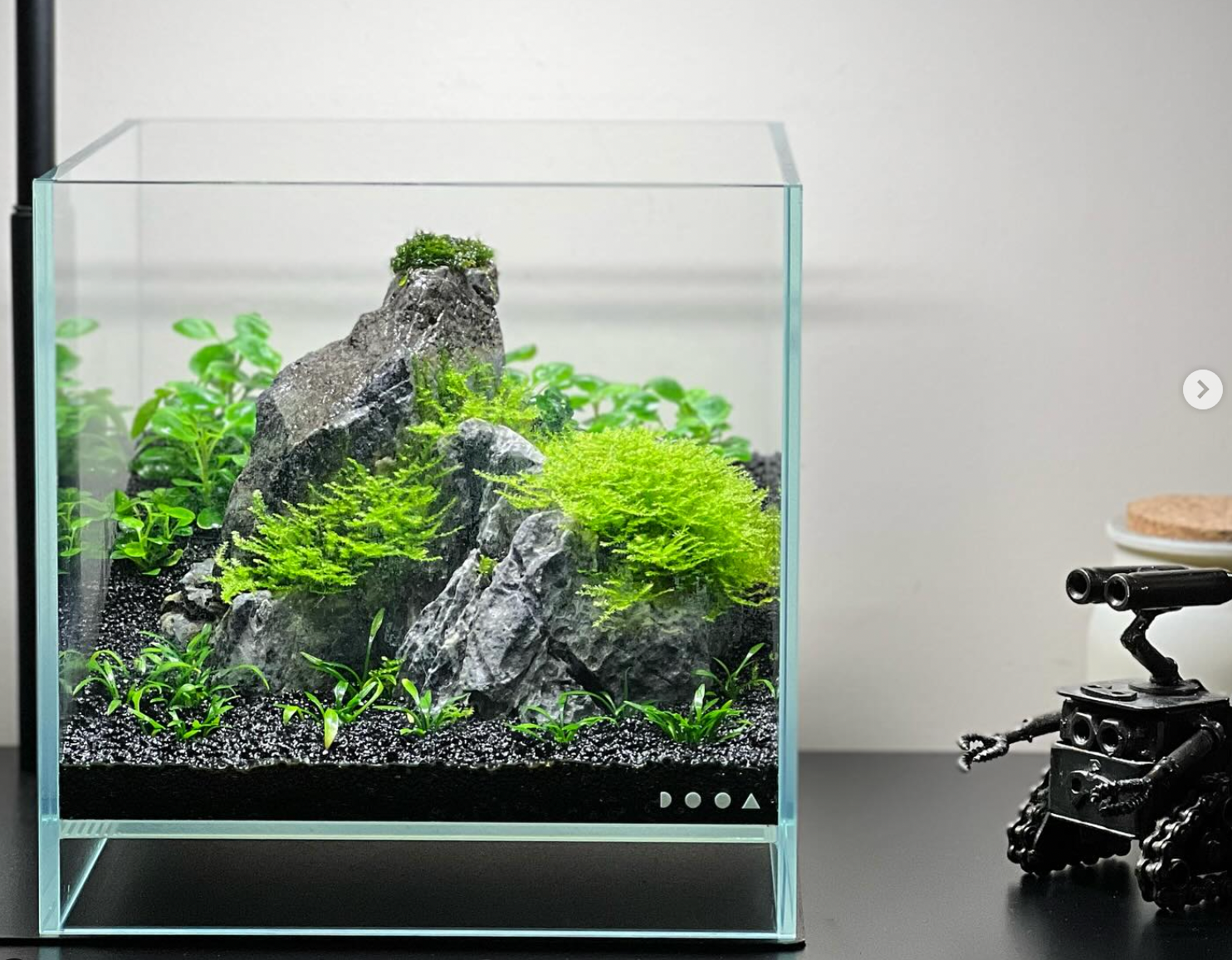
There's a saying that the Iwagumi aquascape is the one that bores its creator the fastest. Is this your case? :)
The Jungle Style
The Jungle Style aquarium is an aquascaping approach that reflects the untamed, dense look of a tropical jungle in a planted aquarium. This style is less about symmetry and more about recreating the wild, overgrown feel where plants reign supreme.
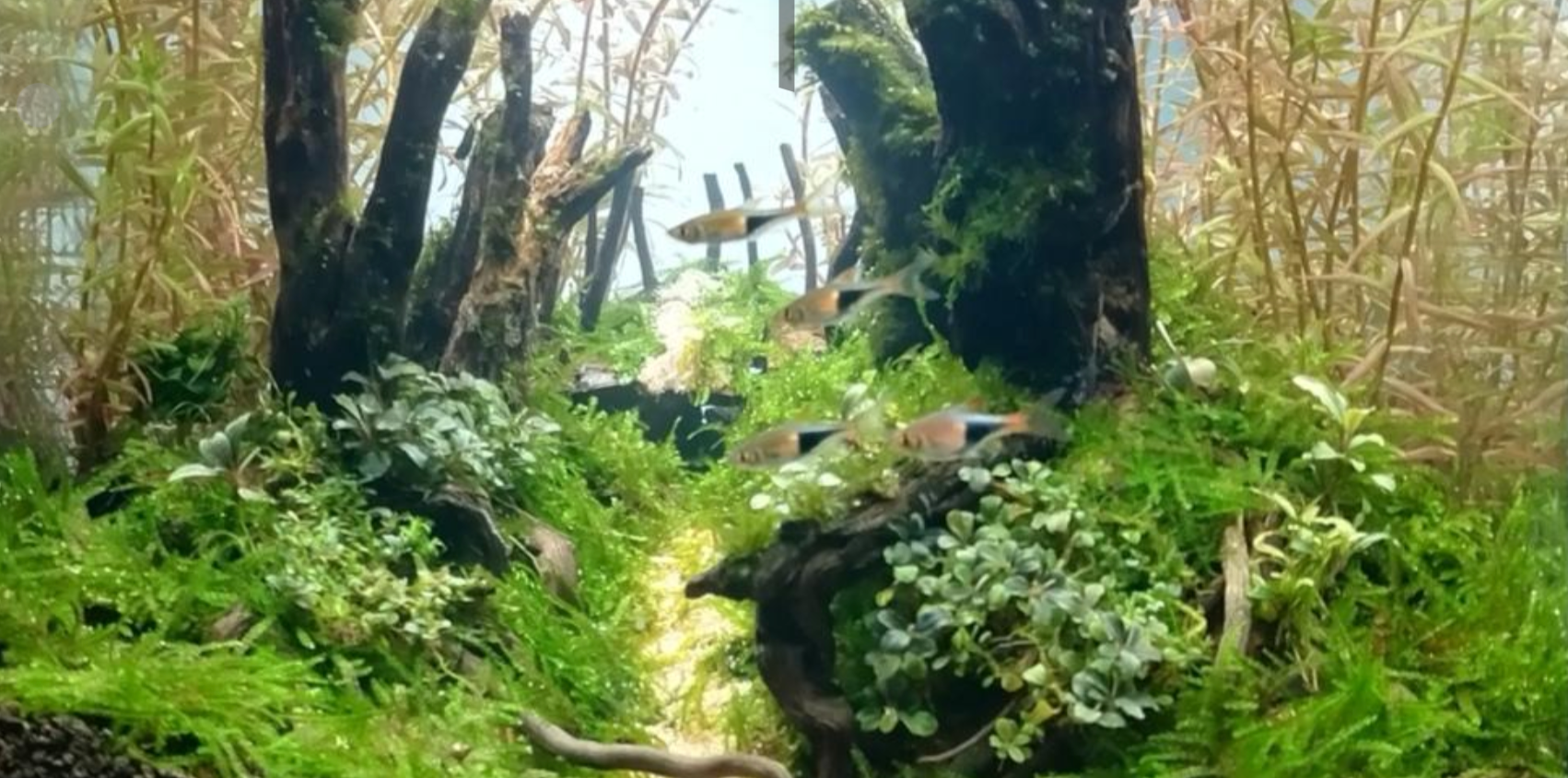
The jungle style tank is typically filled with a variety of tall, leafy aquatic plants that reach the water's surface, intertwined with vines and creeping species that spread across the substrate. The Jungle Style is perfect for aquarists who enjoy a more natural, less manicured aquascaping approach.
The Biotope Aquascape
In Biotope aquascaping, the goal is to replicate a specific natural environment as closely as possible within a tank. This means matching the stones, plants, and water parameters to a particular geographical location, often aiming to support the life of specific fish species native to that habitat.
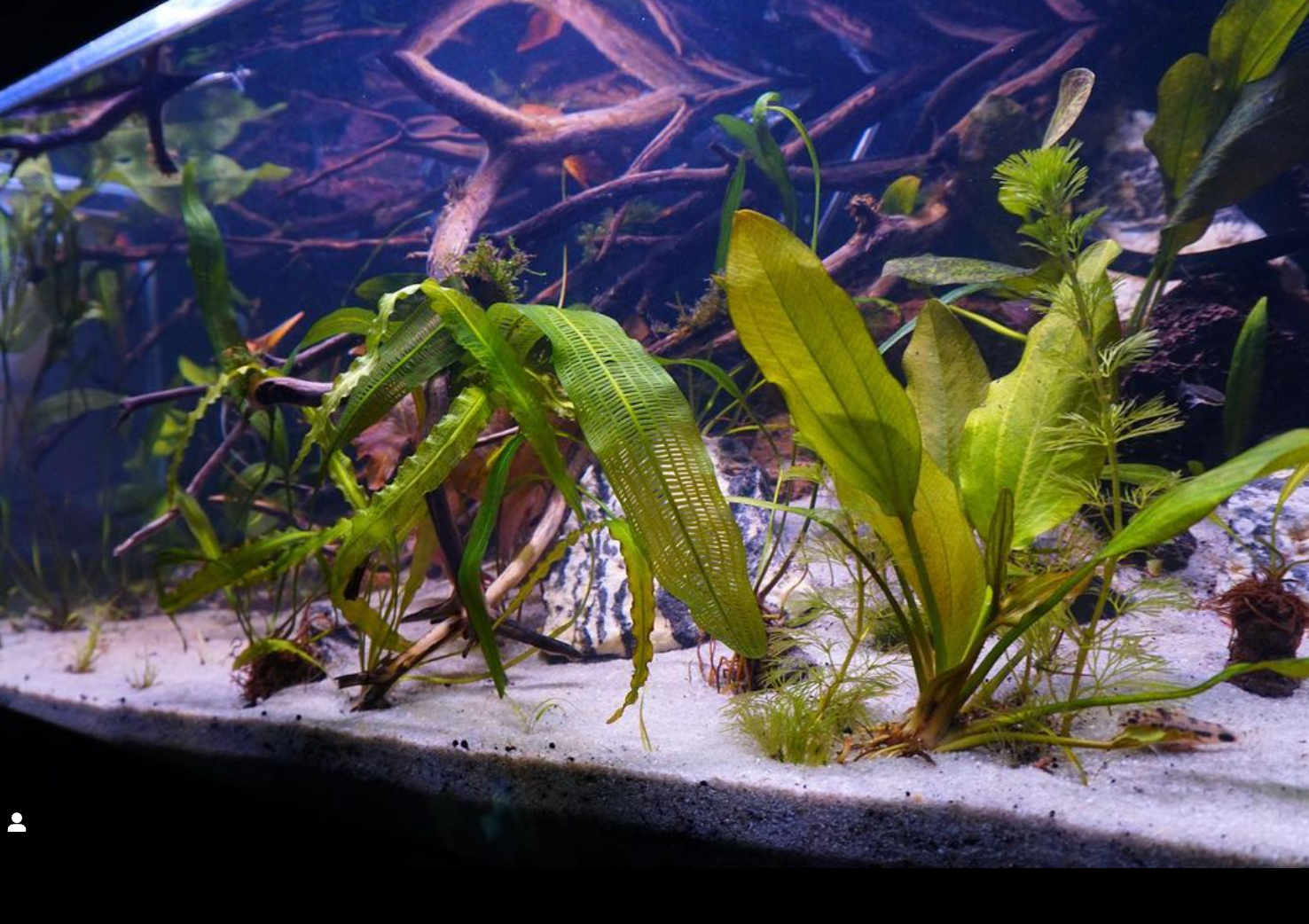
A biotope planted aquarium can be a slice of the Amazon or a representation of an African stream, offering a unique educational perspective on the nature style of aquascaping.
The Walstad Method
The Walstad Method is a nature style aquascaping technique named after Diana Walstad. It focuses on creating a balanced, self-sustaining planted aquarium that mimics natural ecosystems. This method emphasizes the use of soil substrates, a diverse range of plants, and minimal technological intervention, such as limited use of filters or CO2 systems. The goal is to establish a biological balance within the tank where plants and fish can thrive with minimal outside interference.
The Taiwanese Style
The Taiwanese Style of aquascaping adds a whimsical touch to the traditional planted aquarium. This style is recognized for its intricate layouts, often incorporating terraced levels created with stones and decorative elements such as bridges, pathways, or even small figurines. The plants in a Taiwanese tank are arranged to create depth and perspective, leading the eye through a story or scene, making it a creative and narrative-driven aquascaping style.
The Paludarium Setup
A Paludarium is a unique type of aquascaping that combines both terrestrial and aquatic elements within a single tank. It incorporates stones, plants, and sometimes even terrestrial animals or insects, creating a semi-aquatic landscape. This aquascaping style allows for an exciting blend of submerged plants along with emergent foliage and land sections, simulating a riverbank or swamp. The Paludarium is a challenging but rewarding nature style tank, offering a glimpse into the complex interface between land and water.
Benefits of Using CO2 High-Pressure Equipment in Planted Tanks
In the world of aquascaping, the use of CO2 high-pressure equipmentin planted aquariums is often discussed for its benefits in promoting lush plant growth. This is particularly true in Dutch aquariums, where the dense planting schemes require a steady supply of carbon dioxide to meet the high demands of the plants. CO2 supplementation is also super important for carpeting plants and other low growers who can't absorb as much light as plants located in the upper part of the tank.
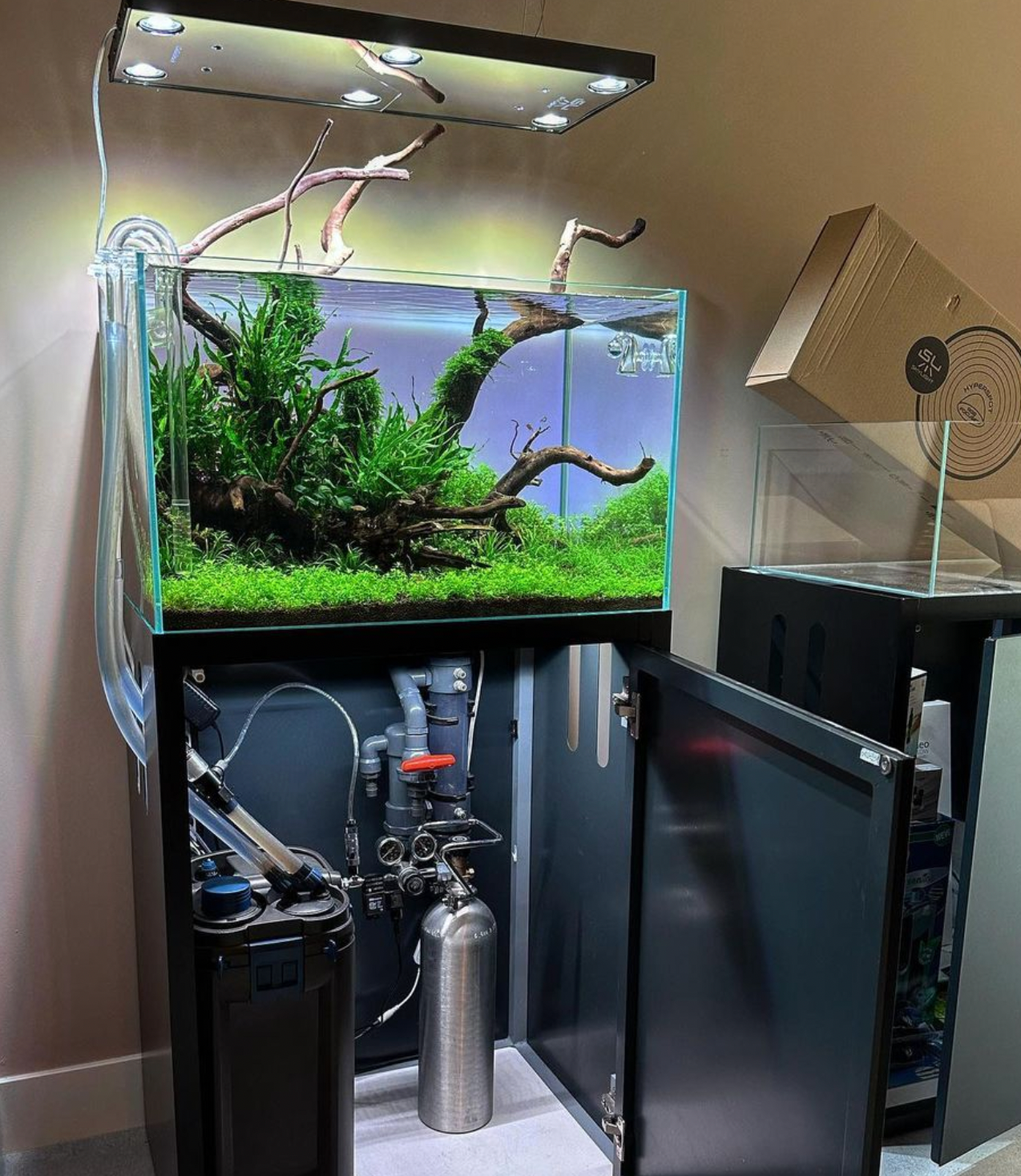
By using a high-pressure CO2 system, aquarists can ensure that plants receive a consistent and precise amount of CO2, which can result in vibrant growth and enhanced coloration, especially in nature style layouts where plant health is paramount.
The Wabi-Kusa Style
The Wabi-Kusa aquascaping style is a blend of nature aquarium and artistry, where plants are grown in a ball of substrate and allowed to develop both emersed and submerged. This approach often results in a beautiful, unstructured growth pattern, evoking the essence of nature in a tank. The style provides a unique challenge in aquascaping, as the aquarist must balance the growth of plants both above and below the waterline, often without the use of hardscape elements like stones.
The Riparium Style
Riparium aquascaping takes inspiration from the shoreline habitats where land and water meet. Unlike traditional aquascaping, this style extends beyond the tank, with plants growing out of the water and creating a lush backdrop that can be viewed from multiple angles. This nature style approach allows for a diverse range of plant species, including those that would not normally be considered for submerged growth, and often incorporates stones and driftwood to simulate a natural riverside.
The Island Style
Island style aquascaping focuses on creating a central feature in the tank that stands out from the surrounding plants and stones. It's a nature style approach that can be used in any size of tank, though it is particularly striking in large aquariums.
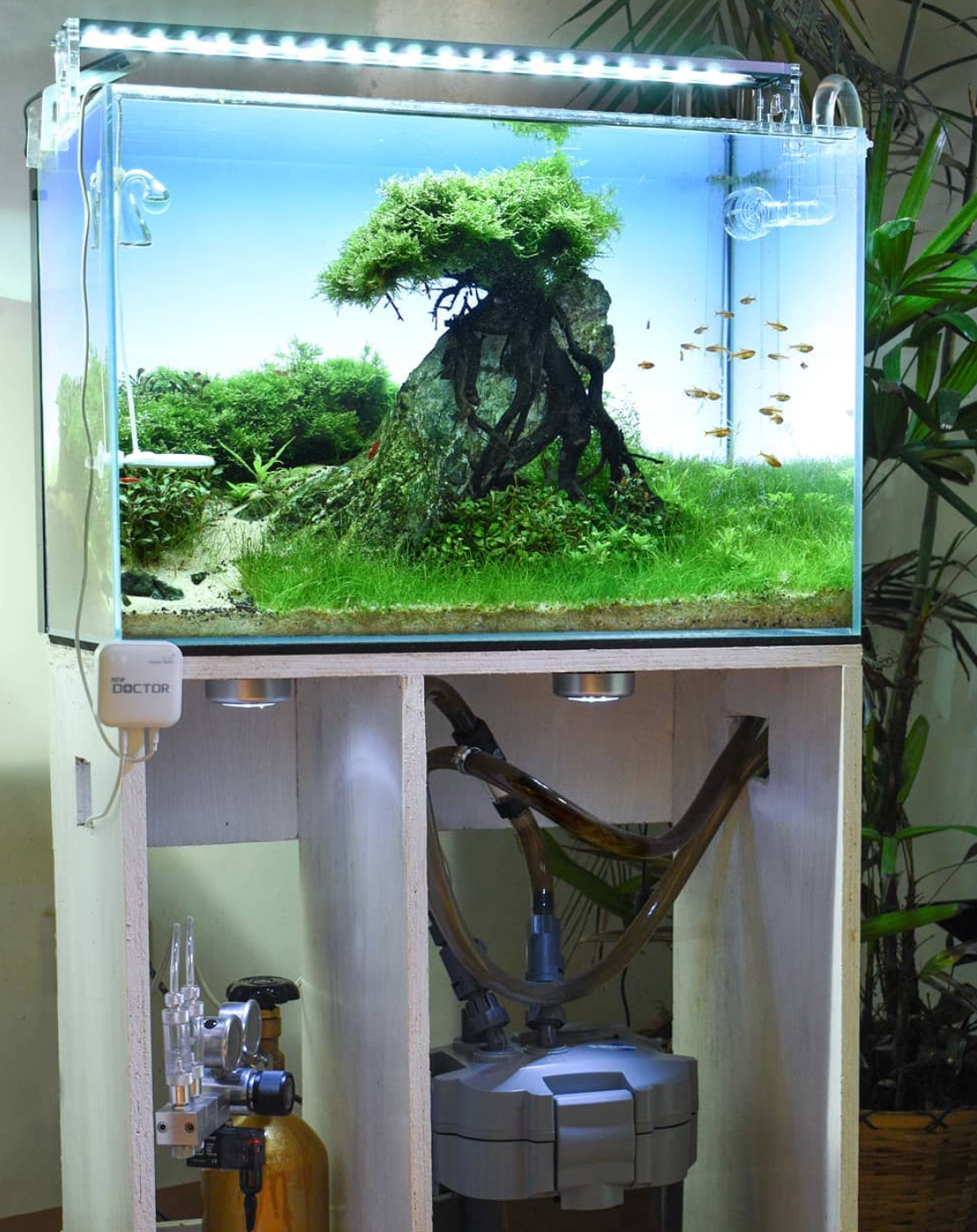
This style allows aquascapers to create a dramatic focal point, often a large mound or pile of stones surrounded by plants, giving the impression of a secluded island oasis within the tank.
Conclusion: Choosing Your Aquascaping Style
With so many aquascaping styles to choose from, selecting the right one for your tank can be a rewarding journey. Each style offers its benefits and challenges, from the Dutch aquarium's plant-centric focus to the minimalist stone arrangements of the Iwagumi. Whether you prefer a tank teeming with diverse plant life or a carefully composed nature aquarium, the key is to find a style that resonates with your personal aesthetic and the needs of your aquatic inhabitants.



